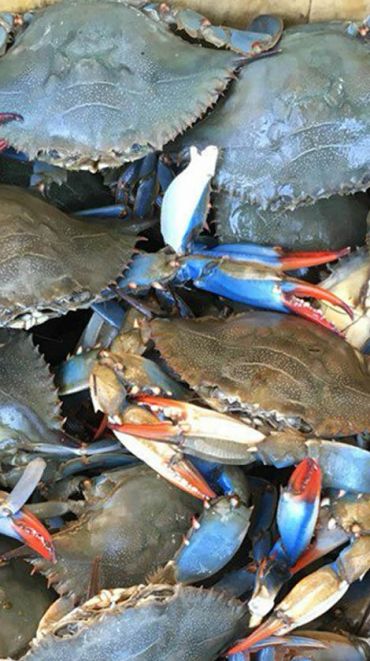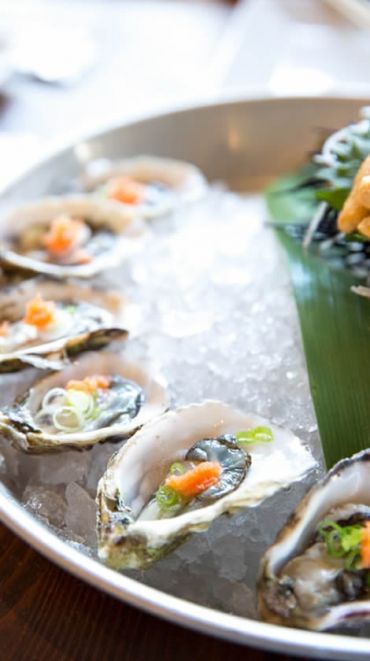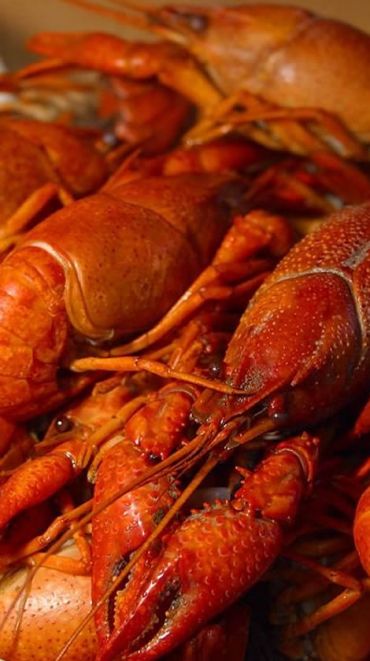We bring fresh whole red snapper, already gutted. Sizes range from 1 1/2 lbs to 4 lbs.
The moist, white flesh of the red snapper has a delicate sweet flavor. It can be served broiled, baked, steamed, poached, fried or grilled. Red snapper responds well to just about any cooking method. Try steaming it whole, Chinese style. Some cooks also like to bake whole snapper stuffed with fresh herbs and seasonings.
See instructions on cooking Red Snapper whole....either on the grill or in the oven.
Red snapper (Lutjanus campechanus), found off the Gulf and Atlantic Coasts, is one of the best known and desired deep-sea delicacies.The species is found from North Carolina to Florida's "snapper banks," off the coasts of Texas and Louisiana and down to the Campeche Bank off Mexico. Snappers are caught in waters 60 to 200 feet deep using large electrical and manually powered reels with multiple-hook rigs.
Adult red snappers are easily distinguished from other red-colored snappers; they are deeper bodied, not as streamlined and have a bright red iris. The back and upper sides vary from pink to red and the lower sides and belly are lighter in color.
Snappers prefer irregular hard bottom formations of rock and limestone covered with coral and sponges. They feed on a variety of bottom dwelling crustaceans and small fishes. The growth of this species is slow; however, it can weigh as much as 30 pounds and grow to 3 feet. They reach sexual maturity after age two and spawn between June and October.
FISH COOKING AND PREPARATION TIPS
Store fresh snapper in the refrigerator at 32-38°F and use within two days, or freeze in water in an air-tight bag or container and use within six months. Thaw in the refrigerator or under cold running water.
Always marinate seafood in the refrigerator.
A general rule for cooking fish is 10 minutes per inch of thickness at 400º to 450ºF, turning the fish halfway through the cooking time. This rule does not apply to frying or microwave cooking.
Fish less than ½-inch thick do not have to be turned.
If fish is cooked in a sauce or foil, add 5 additional minutes to the cooking time.
The cooking time for frozen fish should be doubled. We recommend that you thaw fish prior to cooking.
Fish is done when the flesh becomes opaque and flakes easily at the thickest part.
Broiling
Place fish, one-inch thick or less, 2-4 inches from the source of heat. Thicker pieces should be placed 5-6 inches away from the heat.
Grilling
Preheat gas or electric grill. Charcoal grill: start the fire about 30 minutes before cooking. When coals are white-hot, spread out in a single layer. Adjust the grill height to 4 to 6 inches above the heat. Fish is best grilled over a moderately hot fire and on a grid that has been well oiled. Use indirect heat for a whole fish.
Frying
Pan-fry or Saute: Fry fillets in 1/8-inch of oil - or enough to come in contact with one side of fish - for 3 to 6 minutes per side or until golden and fish flakes easily. Thickness of fillets will determine the cooking time.
Deep fry: Place fish in single layer in deep kettle or saucepan and cook in enough fat to cover and permit it to move freely - do not crowd. The proper temperature in most instances is 365ºF. Cook for 2 to 3 minutes or until golden brown. When cooking multiple batches always allow the temperature of the oil to return to 365ºF before adding fish.




